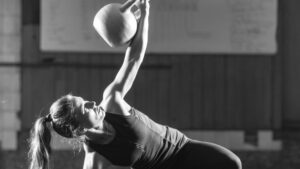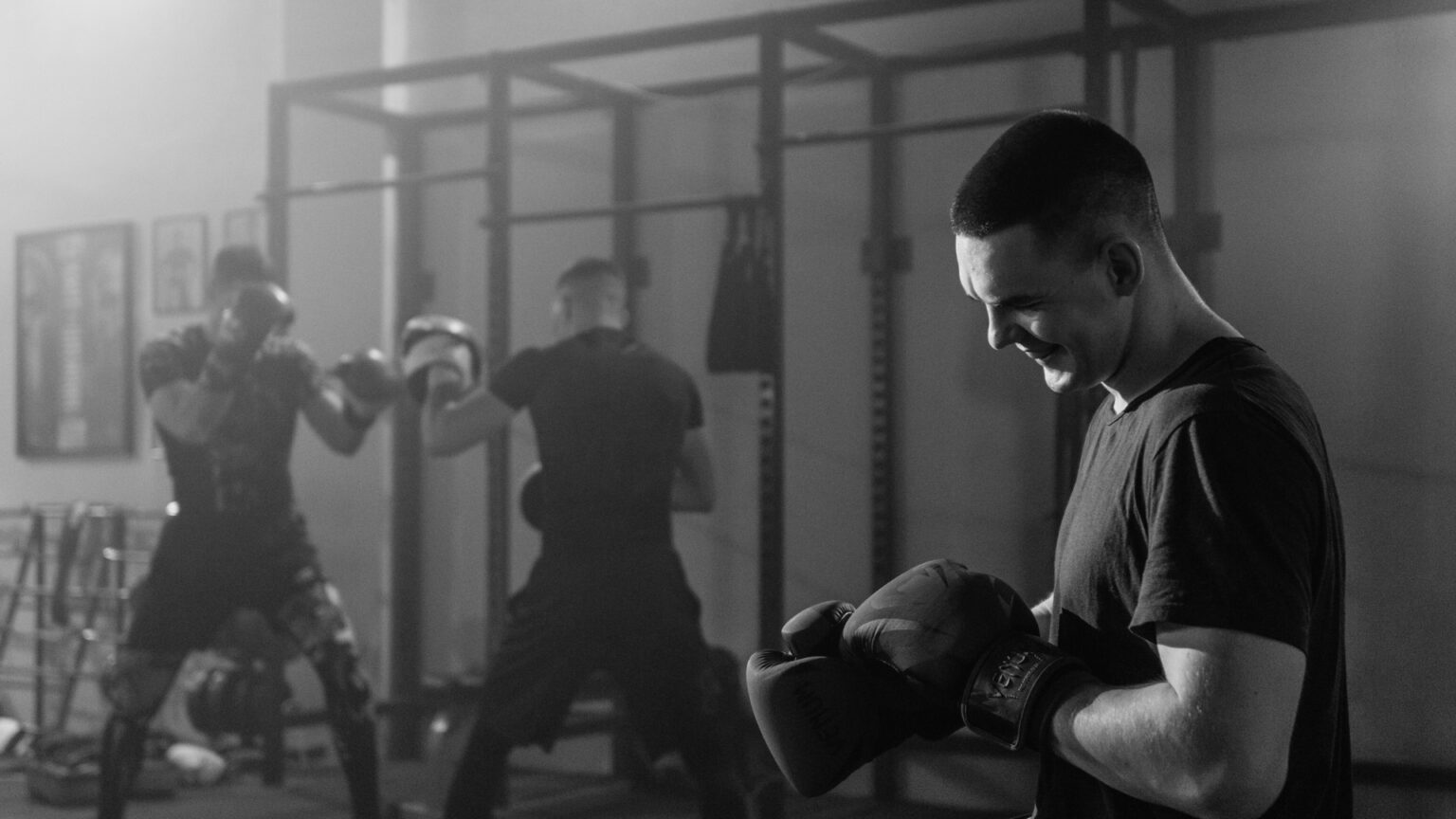
Strength and power are the foundation of any great fighter. Whether you’re stepping into a boxing ring, grappling in MMA, or training for Muay Thai, the ability to deliver explosive movements can be the difference between victory and defeat. Power isn’t just about raw strength—it’s about how quickly you can apply that strength in a fight scenario.
For fighters, this means combining functional strength, mobility, and explosiveness into every movement. It’s not just lifting heavy; it’s moving efficiently and explosively while maintaining control. This guide breaks down 7 strength training exercises tailored specifically for fighters, focusing on improving punching power, speed, and overall athletic performance.
These exercises are chosen for their ability to target the unique needs of fighters: unilateral strength, explosive power, rotational stability, and functional endurance. Let’s dive into the exercises that will transform you into a stronger, more powerful fighter.
But here’s the secret: speed and power are learned skills, not just innate gifts. To develop them, you need a structured plan combining strength, technique, and endurance. This guide dives into five drills proven to enhance both speed and power. Whether you’re training for the ring, the mat, or simply improving fitness, these exercises will help you deliver punches that are fast, sharp, and devastating.
Fighters at every level need to refine their technique through training. Yet, without understanding the connection between speed and power—or the energy systems behind them—it’s difficult to maximize your potential. This article addresses those principles while providing drills that yield results.

Front squats and split squats are staples for fighters looking to maximize leg drive. Punching power originates in the legs, and these exercises help develop the glutes, quads, and hamstrings needed for explosive movements.
Pro Tip: Add a jump at the top of split squats for an explosive plyometric variation.
Plyometric exercises like box jumps and skater jumps enhance your ability to generate force quickly. These movements also improve unilateral strength, which is essential for fighters who need balance and power when pivoting or throwing punches.
Pro Tip: Add resistance bands around your thighs during skater jumps to increase difficulty and improve hip stability.
Punches are rotational movements driven by your core and hips. Rotational kettlebell exercises like kettlebell twists and staggered presses replicate these movements, enhancing your ability to generate force.

Pro Tip: Incorporate kettlebell long cycles for a full-body workout that enhances endurance and power.
Olympic lifts like cleans and snatches are perfect for fighters during the off-season. These lifts develop explosive power from the ground up, engaging the legs, core, and upper body.
Strong shoulders, lats, and chest muscles are essential for fighters. Exercises like weighted pull-ups, incline bench presses, and dumbbell flyes develop the upper-body strength required to deliver powerful punches.
Pro Tip: Incorporate supersets with lighter weights for endurance and muscle balance.
Bodyweight plyometrics like tuck jumps and bounding exercises are excellent for fighters who want to develop power without equipment.
Pro Tip: Perform these drills as part of your warm-up to prime your muscles for explosive movements.
Kettlebell swings and snatches target your posterior chain, including the glutes, hamstrings, and lower back. These exercises improve power and endurance for extended fights.
Pro Tip: Use lighter kettlebells for speed-focused sets and heavier ones for power-focused training.

Energy System | Drill | Duration | Rest | Goal |
ATP-PC | Olympic Lifts | 3–5 reps | 3 min | Explosive Power |
Anaerobic Glycolysis | Unilateral Box Jumps | 10 reps | 2 min | Max Effort |
Aerobic | Traditional Kettlebell Swings | 3 sets of 20 | 1 min | Endurance + Explosive Strength |
Strength and power are the cornerstone of success in combat sports, whether you’re a boxer, MMA fighter, or martial artist. Developing these attributes takes more than raw effort—it requires a strategic approach to training that balances strength, speed, endurance, and recovery. By integrating the seven exercises outlined in this guide, you’re building a comprehensive toolkit for maximum performance.
Strength and Power: A Winning Formula
The exercises in this guide target the key muscle groups and movement patterns fighters rely on. Front squats and split squats strengthen your legs, creating the explosive drive needed for punches and kicks. Plyometric drills like box jumps and skater bounds condition your muscles to release energy quickly, improving speed and agility. By incorporating these movements, you’re not just increasing strength—you’re training your body to apply it efficiently in high-pressure situations.
Rotational exercises, like kettlebell twists and staggered presses, mimic the mechanics of a punch, for maximum power transfer. Olympic lifts provide full-body explosiveness, ideal for fighters in the off-season aiming to peak their performance. Heavy upper-body strength training builds knockout potential, while kettlebell swings and snatches improve endurance, ensuring you maintain power across rounds. This multi-faceted approach ensures every aspect of your fight game is covered.
The Role of Recovery and Consistency
Fighters often overlook the importance of recovery, but it’s a crucial part of any training regimen. Overtraining not only leads to injuries but also reduces your performance in the ring. Rest days, active recovery, and proper nutrition are as vital as the time spent in the gym. When combined with these strength-training principles, recovery allows you to progress faster and avoid burnout.
Consistency is another key factor. Building maximum power doesn’t happen overnight—it requires dedication, repetition, and progressive overload. Each week, challenge yourself to lift heavier, move faster, or improve your technique. With time, the results will speak for themselves, both in your physical performance and your confidence.
Beyond the Physical
Strength training offers benefits that extend far beyond the ring. It builds discipline, mental resilience, and self-belief. The habits you develop in training—goal setting, overcoming obstacles, and pushing your limits—translate into every area of life. Fighters who embrace the grind often find they grow not just as athletes, but as individuals.
Your Path to Power Starts Here
The journey to mastering strength and power is a rewarding one. It demands effort, but the rewards are undeniable: faster punches, stronger strikes, and a body capable of handling any challenge. The drills and exercises outlined here are your blueprint for success. Follow them consistently, track your progress, and adjust as needed to align with your goals.
Remember, every fighter’s path is unique. Start where you are, and don’t be afraid to push beyond your comfort zone. With each session, you’re building the power and resilience to dominate not just in combat but in life. Lace up, hit the gym, and let these exercises propel you toward your peak potential.
Unilateral training helps fighters develop balance, coordination, and functional strength. These movements replicate the single-leg stances and shifting weight seen in fighting, improving stability and power. By addressing imbalances, unilateral exercises prevent injuries and optimize performance during explosive movements like punches, kicks, and defensive maneuvers.
Aim to perform strength training exercises two to three times per week, allowing for proper recovery between sessions. Rotate exercises to target different energy systems and avoid overtraining. This frequency ensures you build power progressively while maintaining mobility and endurance for your fight game.
No, it’s best to split these exercises into focused sessions. For example, dedicate one day to lower-body strength and plyometrics, and another to upper-body power and core stability. This allows for optimal performance and ensures you don’t exhaust your energy systems in a single session.
Strength training develops the muscles in your legs, core, and upper body that drive punching power. Exercises like front squats and kettlebell swings improve the explosive force needed for punches, while rotational movements enhance the torque required for knockout shots. Combined, these exercises ensure punches are both fast and powerful.
Begin with a kettlebell that allows for controlled, explosive movements—typically 8–12 kg for beginners. Focus on form and gradually increase weight as your strength improves. Starting light ensures you build proper technique, which is crucial for avoiding injuries and maximizing benefits.
Overtraining can be avoided by incorporating proper recovery days, monitoring fatigue levels, and rotating training intensities. Listen to your body and include active recovery methods like stretching, foam rolling, or light cardio on rest days. Balancing high-intensity training with recovery ensures long-term progress without burnout.
Strength is the ability to lift or resist force, while power combines strength with speed to create explosive movements. For fighters, power translates into quick, forceful punches and kicks. Strength training builds the foundation, and power exercises enhance the speed at which you apply that strength.
coachjohanncscs.com only uses primary research and scholarly studies as references over secondary sites. Other references are primarily from reputable social media accounts of experts only in the fields of health, nutrition, sports science, physiology, psychology, and physical therapy.